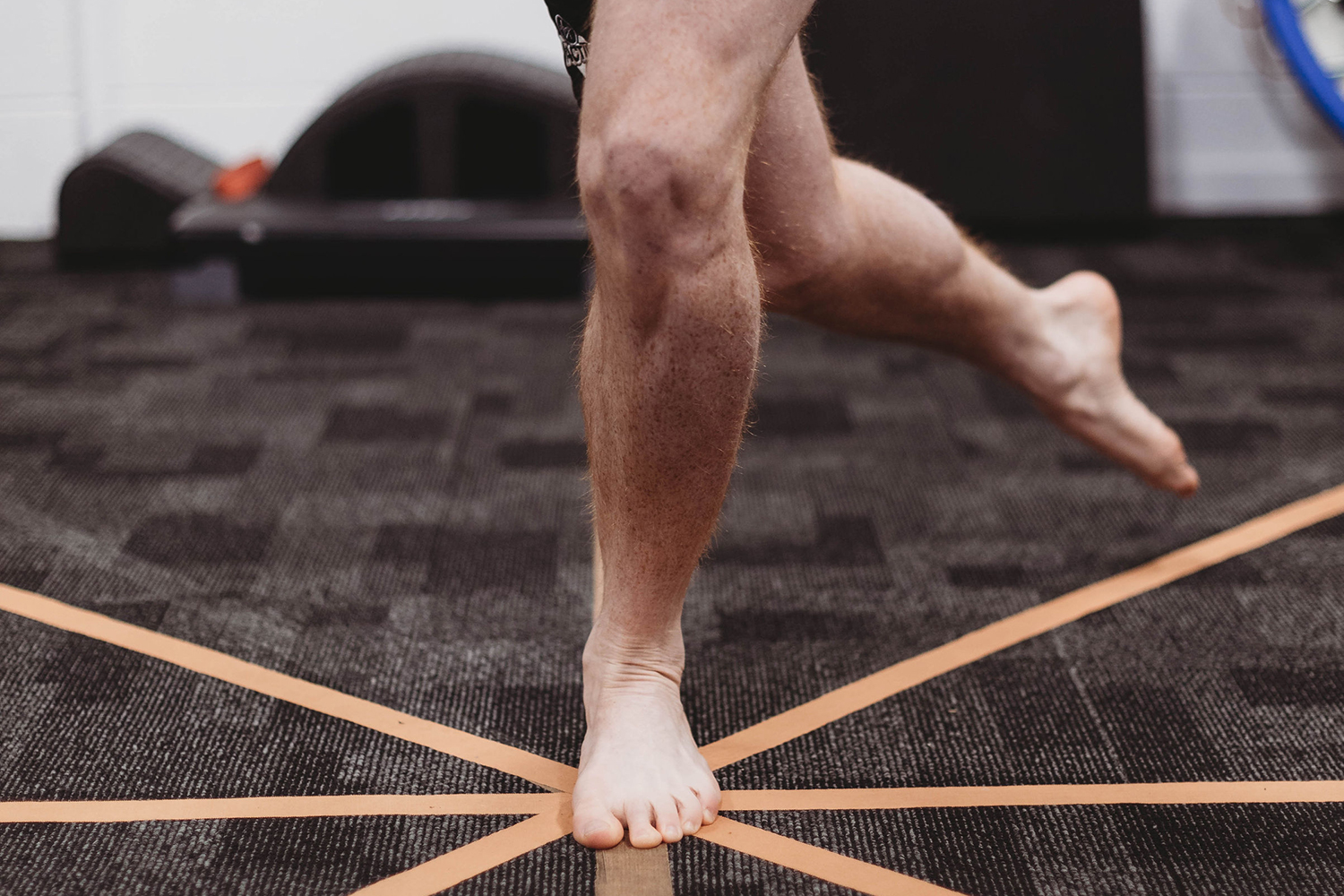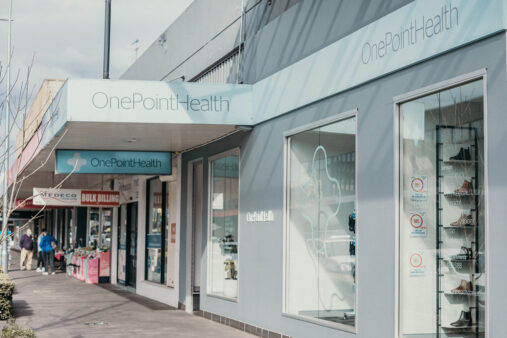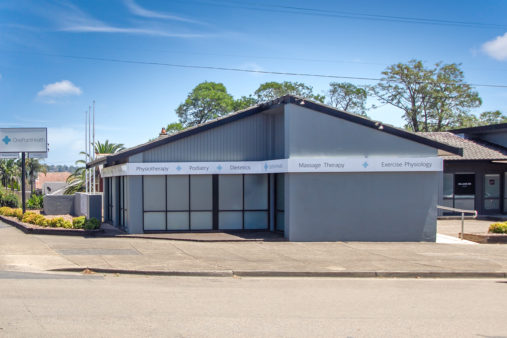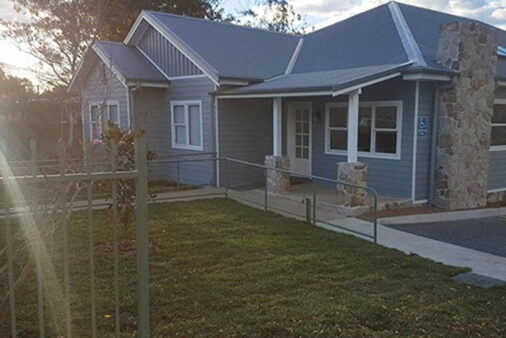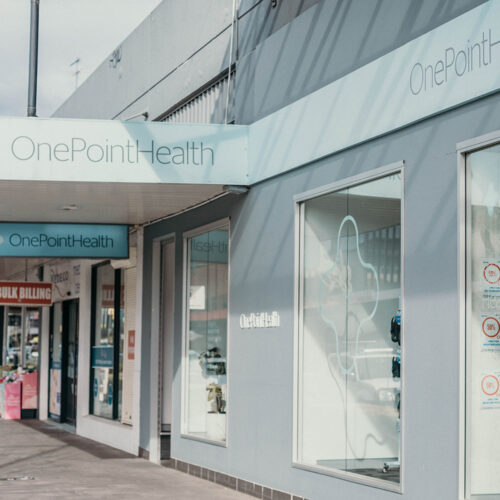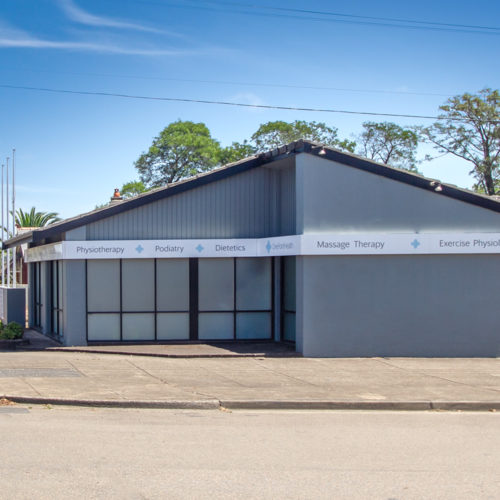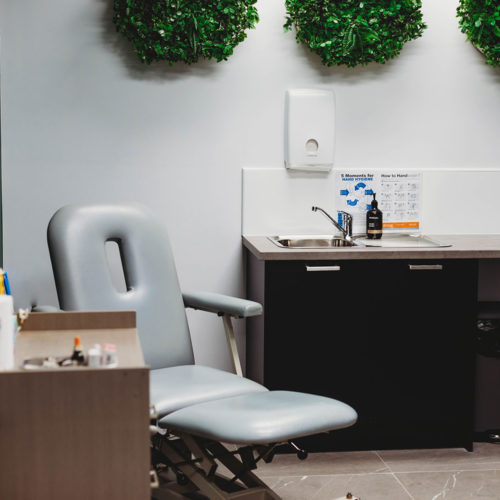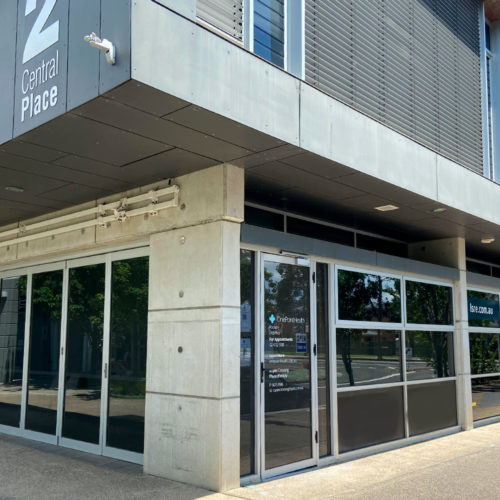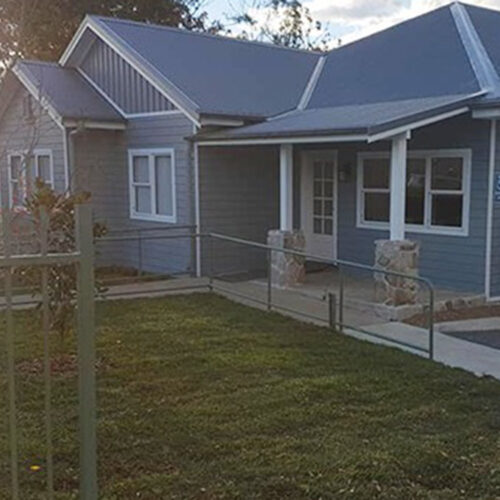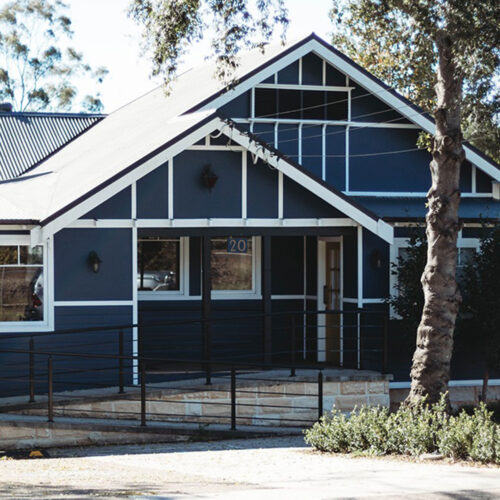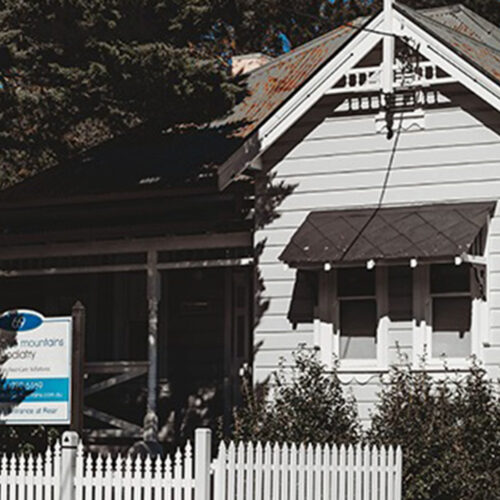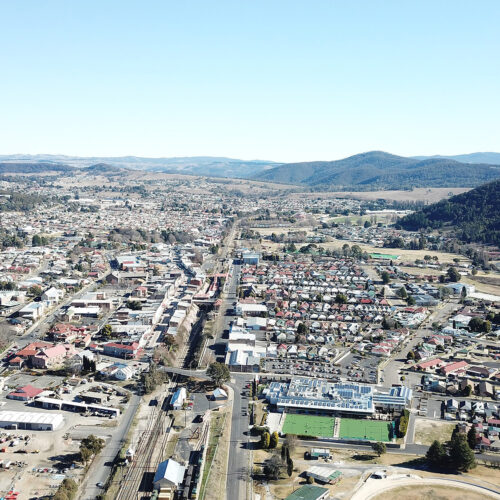Experience expert ACL physiotherapy and rehabilitation at OnePointHealth, where comprehensive care and individualised treatment strategies help you regain strength and mobility, ensuring a safe and effective return to your active lifestyle.
An ACL (anterior cruciate ligament) injury is a common type of knee injury that affects the ligament connecting the thigh bone (femur) to the shin bone (tibia). The ACL plays a crucial role in stabilising the knee joint and controlling the forward movement of the tibia in relation to the femur.
Recovery from an ACL injury can take several months, and rehabilitation is an important part of the process to regain strength, stability, and range of motion in the knee. It is advisable to consult with a healthcare professional for an accurate diagnosis and appropriate treatment plan for an ACL injury.
Who is affected
ACL (anterior cruciate ligament) injuries are a common occurrence, particularly in sports that involve pivoting, jumping, and sudden changes in direction. Here is some general information on the epidemiology of ACL injuries:
- Incidence: ACL injuries are more prevalent in certain populations, such as athletes involved in high-demand sports like soccer, basketball, football, and skiing. However, they can also occur in non-athletic individuals during activities that involve sudden stops or changes in direction.
- Gender differences: Studies have shown that females are at a higher risk of ACL injuries compared to males. This is attributed to factors like differences in anatomy, hormonal influences, neuromuscular control, and biomechanics.
- Age distribution: ACL injuries can occur across a wide age range, but they are most commonly seen in individuals between the ages of 15 and 45. Young athletes, in particular, are susceptible due to their participation in sports activities.
- Mechanism of injury: ACL injuries often result from non-contact mechanisms, such as landing from a jump, sudden deceleration, or pivoting with a planted foot. Contact injuries, such as direct blows to the knee, can also cause ACL damage.
- Risk factors: Several factors can increase the risk of ACL injuries, including previous ACL injury, poor neuromuscular control, muscle imbalances, inadequate warm-up or conditioning, playing surface conditions, and equipment issues.
- Prevention strategies: Various prevention programs have been developed to reduce the risk of ACL injuries. These programs typically focus on improving neuromuscular control, strengthening the lower limb muscles, enhancing landing and cutting techniques, and promoting proper biomechanics during sports activities.
Symptoms of a suspected ACL injury
The symptoms of a suspected ACL (anterior cruciate ligament) injury may include:
- Sudden and severe pain: You may experience a sharp and intense pain at the time of injury.
- Swelling: The knee may swell rapidly within a few hours after the injury. The swelling is often due to bleeding within the joint.
- Instability: You may feel that your knee is unstable or giving way, making it difficult to bear weight or walk.
- Audible “popping” sound: Some individuals report hearing a popping or snapping sound at the time of injury.
- Limited range of motion: You may have difficulty fully bending or straightening your knee.
- Tenderness: The area around the injured ACL may be tender to touch.
If you suspect an ACL injury, it is crucial to seek medical attention from a healthcare professional, such as an orthopedic specialist, sports medicine doctor or physiotherapist.
Treatment post ACL injury
Physiotherapy plays a crucial role in the rehabilitation process following an ACL (anterior cruciate ligament) injury. Here are some general components of physiotherapy treatment post-ACL injury:
Initial assessment: A physiotherapist will assess the extent of the injury, evaluate your range of motion, strength, and stability, and develop an individualised treatment plan.
Pain and swelling management: Techniques such as ice therapy, compression, and elevation may be used to reduce pain and swelling in the affected knee.
Range of motion exercises: Gentle exercises and stretches will be prescribed to gradually restore the normal range of motion in the knee joint.
Strengthening exercises: Specific exercises will be prescribed to strengthen the muscles around the knee, including the quadriceps, hamstrings, and calf muscles. This helps provide stability and support to the knee joint.
Balance and proprioception training: Exercises that challenge your balance and improve your body’s awareness of joint position (proprioception) are important for restoring stability and preventing future injuries.
Gradual return to sports: Your physiotherapist will guide you through a structured program to safely reintroduce sports-specific activities, ensuring that your knee is adequately prepared for the demands of your chosen sport.
Education and guidance: Your physiotherapist will provide education on proper body mechanics, injury prevention strategies, and self-management techniques to support your long-term recovery.
It’s important to note that every individual’s rehabilitation needs may vary, and a personalised treatment plan should be developed in consultation with a qualified physiotherapist. They will closely monitor your progress, make necessary adjustments to the treatment plan, and provide ongoing support throughout your ACL injury rehabilitation journey.
Prognosis of an ACL injury
The recovery timeframe for an ACL (anterior cruciate ligament) injury can vary depending on several factors, including the severity of the injury, individual healing abilities, and the chosen treatment approach. In general, it can take anywhere from several months to a year for a full recovery.
After an ACL injury, the initial phase of recovery typically involves reducing pain and swelling, regaining range of motion, and restoring muscle strength. This may involve physical therapy, exercises, and sometimes the use of assistive devices like crutches or braces.
Surgical intervention, such as ACL reconstruction, may be recommended for certain cases. Following surgery, a rehabilitation program is usually prescribed to gradually restore knee function and stability. This process can take several months and may involve a combination of physical therapy, exercises, and a gradual return to activities.
It is important to note that each person’s recovery is unique, and the timeline can vary. It is crucial to work closely with a healthcare professional who can provide personalised guidance and monitor your progress throughout the recovery process.
Risk factors
There are several risk factors that can increase the likelihood of re-injuring the ACL (anterior cruciate ligament) after recovery. These risk factors include:
- Return to sports or physical activities too soon: Returning to sports or activities before the knee has fully healed and regained strength can increase the risk of re-injury.
- Insufficient rehabilitation: Inadequate rehabilitation or not following the prescribed rehabilitation program can lead to muscle imbalances, decreased stability, and increased risk of re-injury.
- Poor technique or biomechanics: Incorrect movement patterns, poor landing techniques, or improper body mechanics during sports or activities can put excessive stress on the ACL and increase the risk of re-injury.
- Previous ACL injury: Individuals who have previously injured their ACL are at a higher risk of re-injury compared to those who have not experienced an ACL injury before.
- Gender: Females tend to have a higher risk of ACL injuries compared to males, and therefore may also have a higher risk of re-injury.
- Genetic factors: Some individuals may have certain genetic factors that make them more prone to ACL injuries and re-injuries.
It is important to work closely with a healthcare professional, such as a physical therapist or sports medicine specialist, to address these risk factors and develop a comprehensive plan to reduce the risk of re-injury. This may include proper rehabilitation, strengthening exercises, technique training, and gradual return to sports or activities.
What to expect when you visit a physio for an ACL injury
When you visit a physiotherapist for an ACL (anterior cruciate ligament) injury, you can expect a comprehensive evaluation and a tailored treatment plan to address your specific needs. Here are some common aspects you may encounter during your visit:
- Assessment: The physiotherapist will assess your knee’s range of motion, strength, stability, and overall function. They may also review your medical history and any diagnostic imaging results, such as MRI scans.
- Goal Setting: The physiotherapist will work with you to establish realistic goals for your recovery. These goals may include reducing pain and swelling, improving range of motion, regaining muscle strength, and returning to normal activities.
- Treatment Plan: Based on the assessment findings and your goals, the physiotherapist will develop a personalised treatment plan. This plan may include a combination of exercises, manual therapy techniques, modalities (such as heat or ice therapy), and functional training.
- Exercise Program: You will likely be prescribed specific exercises to improve strength, flexibility, and stability in your knee. These exercises may target the muscles surrounding the knee joint, as well as the core and lower body muscles to enhance overall stability and function.
- Education: The physiotherapist will provide you with education on proper body mechanics, movement patterns, and techniques to prevent further injury. They may also offer guidance on activity modification and the use of assistive devices, such as crutches or braces, if necessary.
- Progress Monitoring: Throughout your visits, the physiotherapist will monitor your progress and make adjustments to your treatment plan as needed. They will assess your response to treatment and provide guidance on when it may be appropriate to progress to more challenging activities or return to sports.
Remember, every individual’s treatment plan may vary based on their specific condition and needs. It is important to communicate openly with your physiotherapist, follow their instructions, and actively participate in your rehabilitation to optimise your recovery from an ACL injury.
Non-operative/Cross bracing protocol physiotherapy ACL management
Cross bracing is a commonly used protocol in physiotherapy for ACL (anterior cruciate ligament) management. This protocol involves the use of a knee brace, specifically a cross brace, to provide stability and support to the knee joint following an ACL injury or surgery. The purpose of cross-bracing is to limit excessive movement and protect the healing ligament during the rehabilitation process.
The specific cross-bracing protocol may vary depending on the individual’s condition and the recommendations of their healthcare professional.
However, here are some general guidelines that may be included in a cross-bracing protocol for ACL management:
1. Selection of the appropriate knee brace: A healthcare professional will assess the individual’s knee stability and recommend the most suitable type of cross brace for their specific needs.
2. Fitting and adjustment: The knee brace should be properly fitted and adjusted to ensure a snug and comfortable fit. This may involve adjusting straps, hinges, or other components of the brace.
3. Weight-bearing restrictions: The healthcare professional may provide guidelines on weight-bearing restrictions, such as partial weight-bearing or non-weight-bearing, depending on the stage of recovery.
4. Range of motion exercises: The individual may be instructed to perform a specific range of motion exercises to maintain or improve knee flexibility while wearing the brace.
5. Gradual brace weaning: As the individual progresses in their rehabilitation, the healthcare professional may gradually reduce the reliance on the brace by allowing periods of brace-free movement during certain activities.
6. Monitoring and adjustments: Regular follow-up appointments with the healthcare professional are important to monitor progress, assess the effectiveness of the brace, and make any necessary adjustments to the protocol.
It is crucial to consult with a qualified healthcare professional, such as a physiotherapist or orthopedic specialist, for an accurate assessment and personalised cross-bracing protocol tailored to your specific ACL management needs. They will guide you through the appropriate exercises, precautions, and progressions to optimise your recovery.
Surgical intervention
Surgical management is one of the treatment options for ACL (anterior cruciate ligament) injuries, particularly for individuals who are physically active or engage in sports that require stability and agility in the knee joint. The decision to undergo surgery is typically based on various factors, including the individual’s activity level, age, overall knee stability, and the presence of associated injuries.
ACL reconstruction is the most common surgical procedure for ACL injuries. During this procedure, a graft is used to replace the torn ACL. The graft can be sourced from different locations, such as the patient’s own hamstring tendon, patellar tendon, or a donor graft. The surgeon will make small incisions and use arthroscopic techniques to insert the graft and secure it in place using screws or other fixation devices.
Following surgery, a comprehensive rehabilitation program is essential for optimal recovery. This program typically involves physical therapy to regain range of motion, strengthen the muscles around the knee, and gradually reintroduce functional activities. The duration and intensity of the rehabilitation process may vary depending on individual factors and the surgeon’s recommendations.
It is important to consult with an orthopedic surgeon or a healthcare professional specialising in sports medicine to determine the most appropriate surgical management approach for your ACL injury. They will be able to evaluate your specific condition and provide personalised recommendations based on your needs and goals.
Physiotherapy following ACL reconstruction
Physiotherapy plays a key role in rehabilitation following ACL reconstruction surgery. Here are some of the main aspects of physiotherapy treatment at this stage:
- Early motion exercises: Gentle range of motion exercises will be prescribed to restore flexion and extension in the knee joint. This helps prevent stiffness.
- Patellar mobilisation: Techniques to improve patellar mobility are important to ensure proper tracking of the kneecap.
- Reducing swelling: Modalities like ice, compression, and elevation may be used to control swelling and pain after surgery.
- Progressive strength training: The physiotherapist will prescribe a progressive strengthening program for the quadriceps, hamstrings, calves and core muscles.
- Proprioception and balance training: Exercises to improve balance, coordination, and body awareness will be incorporated.
- Functional training: Sports-specific drills and agility exercises will be introduced to prepare for return to activities.
- Bracing: The physiotherapist provides guidance on weaning from the brace and its appropriate use.
- Home exercise program: You will be given a customised home exercise routine to complement supervised therapy.
- Guidance on activity modification: Your physiotherapist guides you on appropriate levels of activity and exercise as you recover.
Close communication with your physiotherapist and adherence to their prescribed treatment plan is key to achieving optimal outcomes after ACL reconstruction.
